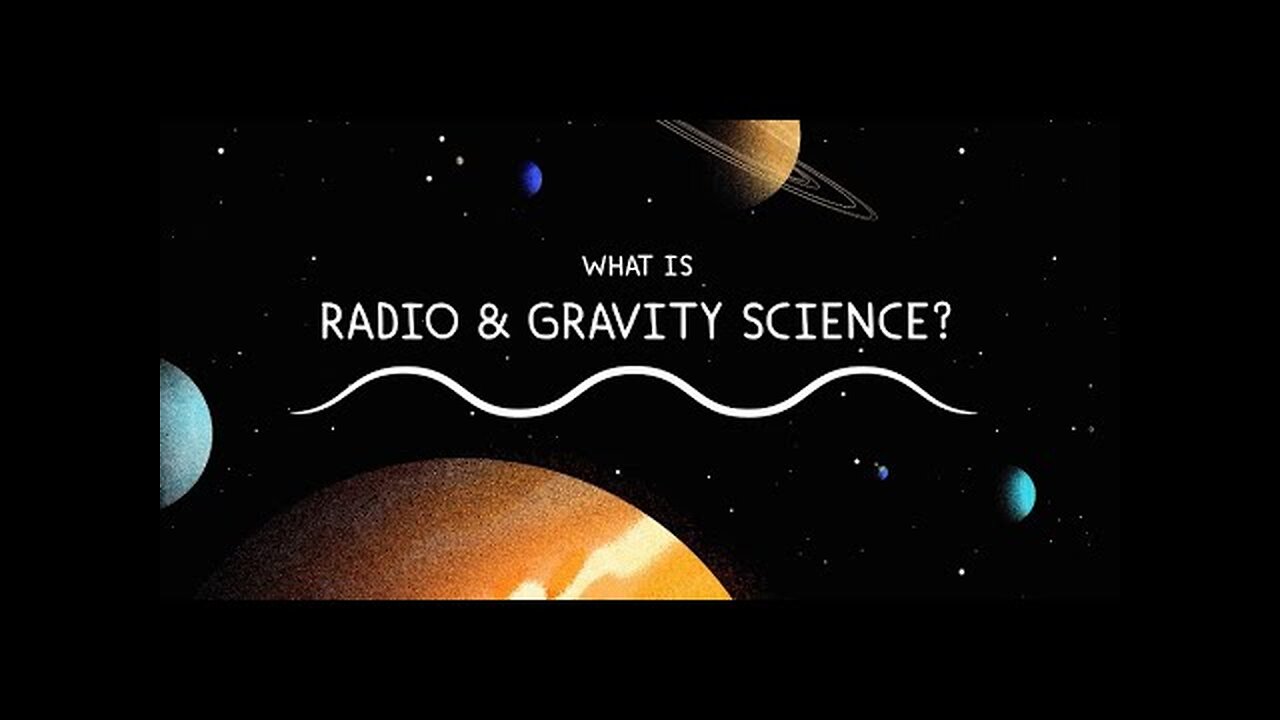Premium Only Content

How NASA Uses Gravity and Radio Waves to Study Planets and Moons
The Deep Space Network, NASA’s international collection of giant radio antennas used to communicate with spacecraft at the Moon and beyond, helps scientists and engineers use gravity and radio science experiments to learn more about our planetary neighborhood.
After reaching a spacecraft reaches its destination, it uses radio antennas to communicate with the Deep Space Network, which in turn transmits radio signals back to the spacecraft. Every spacecraft travels in a predetermined path emitting radio signals as it orbits around its target. Scientists and engineers can infer the spacecraft's location and how fast it's going by measuring changes in the spacecraft's radio signal frequency. This is made possible by the Doppler effect, the same phenomenon that causes a siren to sound different as it travels towards and away from you.
The Doppler phenomenon is observed here when the spacecraft and the Deep Space Network antenna move in relation to each other. Differences between the frequency of radio signals sent by the spacecraft as it orbits and signals received on Earth give us details about the gravitational field of a planetary body. For example, if the gravity is slightly stronger, the spacecraft will accelerate slightly more. If gravity is slightly weaker, the spacecraft will accelerate slightly less. By developing a model of the planetary body's gravitational field, which can be mapped as a gravitational shape, scientists and researchers can deduce information about its internal structure.
The Deep Space Network was developed by and is managed by NASA’s Jet Propulsion Laboratory (JPL) in Southern California. The antennas of the Deep Space Network are the indispensable link to robotic explorers venturing beyond Earth. They provide the crucial connection for commanding our spacecraft and receiving never-before-seen images and scientific information on Earth, propelling our understanding of the universe, our solar system and ultimately, our place within it.
JPL manages the Deep Space Network for the Space Communications and Navigation (SCaN) Program, based at NASA Headquarters within the Space Operations Mission Directorate.
Learn more about the DSN at go.nasa.gov/about-dsn
Credit: NASA/JPL-Caltech
-
 LIVE
LIVE
WeAreChange
1 hour agoAliens?! Pentagon Shoots Down Iranian Mothership Drone Narrative
1,673 watching -
 LIVE
LIVE
Dr. Drew
7 hours agoRoger Ver, Jan 6ers, Ross Ulbricht: Who Should Trump Pardon First? w/ Robert Barnes & Aaron Day – Ask Dr. Drew
1,526 watching -
 1:28:46
1:28:46
Redacted News
3 hours agoBREAKING! CIA DEEP STATE PLAN TO STOP TRUMP ACCELERATES WITH FALSE FLAGS TIED TO IRAN | REDACTED
88.3K177 -
 5:38:59
5:38:59
Dr Disrespect
7 hours ago🔴LIVE - DR DISRESPECT - FORTNITE - FIRST PERSON MODE
175K65 -
 UPCOMING
UPCOMING
Melonie Mac
2 hours agoThe Game Awards Live Reaction! Go Boom Live Ep 31!
5291 -
 LIVE
LIVE
Exploring With Nug
8 hours agoMissing Person Found After 25 Years With A Dark Past! What Did He Do?
164 watching -
 1:02:09
1:02:09
In The Litter Box w/ Jewels & Catturd
22 hours agoFANI IN DEFAULT | In the Litter Box w/ Jewels & Catturd – Ep. 703 – 12/11/2024
49.9K17 -
 3:21:08
3:21:08
Viss
6 hours ago🔴LIVE - Dominating The Delta Force Arena! - Delta Force Extractions
23.5K5 -
 17:41
17:41
SLS - Street League Skateboarding
6 hours agoSuper Crown Finalist: Chloe Covell | Best of the 2024 SLS Championship Tour, so far…
15.7K1 -
 2:09:10
2:09:10
Mally_Mouse
3 hours agoLet's Yap About It - LIVE!
43.9K2